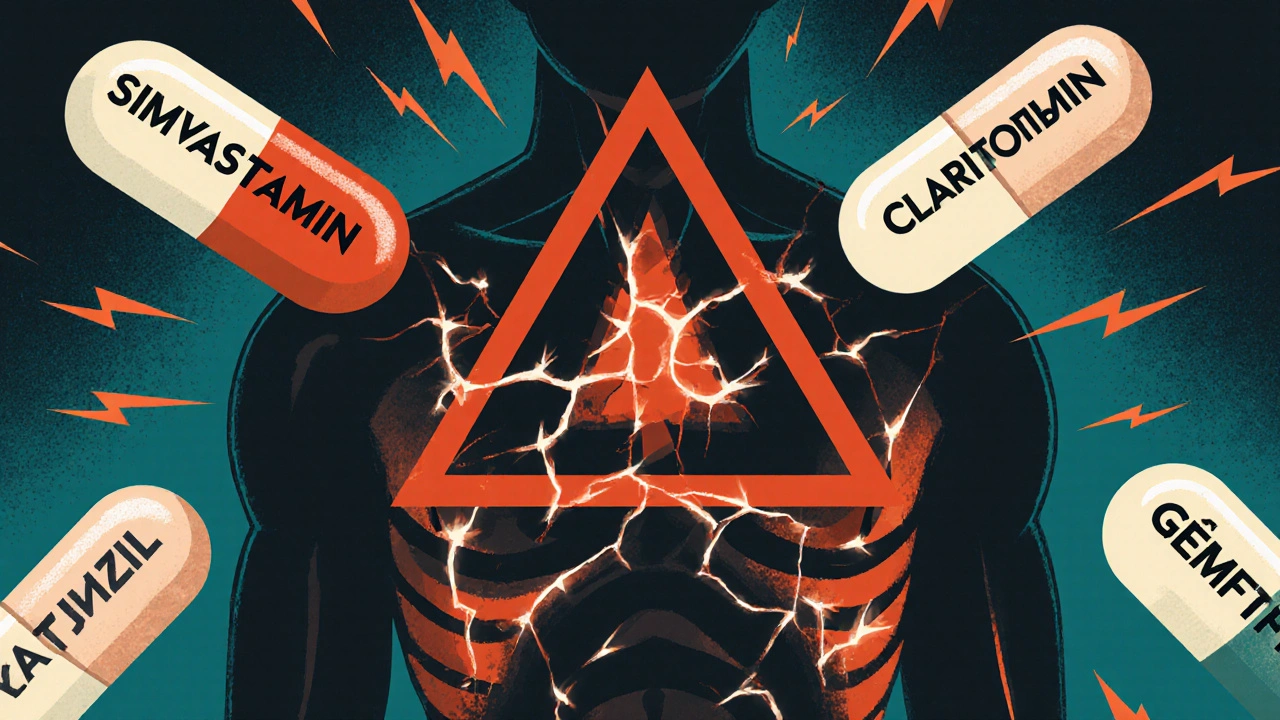Statin and Muscle Pain: What You Need to Know About Side Effects and Solutions
When you take a statin, a class of cholesterol-lowering drugs used to reduce heart attack and stroke risk. Also known as HMG-CoA reductase inhibitors, they work by blocking a liver enzyme that makes cholesterol. But for many people, the benefit comes with a trade-off: statin and muscle pain. It’s not just a minor annoyance—it can make walking, climbing stairs, or even getting out of bed feel impossible. And if you’re not sure whether it’s the drug or just aging, you’re not alone.
Not everyone on statins gets muscle pain, but studies show up to 1 in 10 people report it. The pain usually shows up in the shoulders, thighs, or calves, and it often feels like soreness after a hard workout—even if you haven’t exercised. Sometimes it’s just tiredness or weakness, not sharp pain. The most common statins linked to this are atorvastatin, a widely prescribed statin used for high cholesterol and heart disease prevention, simvastatin, and rosuvastatin. It’s not always the dose—some people react badly even to low amounts. What’s less known is that muscle pain can start weeks or months after you begin the drug, so it’s easy to blame something else.
Here’s the thing: muscle pain from statins isn’t just discomfort. In rare cases, it can lead to a dangerous condition called rhabdomyolysis, where muscle tissue breaks down and floods your kidneys with toxins. But that’s extremely rare—far less than 1 in 10,000. Most often, it’s a mild, manageable issue. If you’re having pain, don’t quit cold turkey. Talk to your doctor. They might check your blood for CPK levels, a marker of muscle damage, or switch you to a different statin. Some people find relief by switching from atorvastatin to pravastatin, which is less likely to cause muscle issues. Others benefit from coenzyme Q10 supplements, though evidence is mixed. And if you’re also taking other meds—like antibiotics, antifungals, or even grapefruit juice—that can worsen the problem. It’s not just the statin; it’s the combo.
What’s clear from the real-world experiences in our posts is that people want practical answers, not just warnings. They want to know: Can I keep taking it? Is there a better option? Do I need to change my lifestyle? That’s why we’ve gathered real guides here—on how statins affect kidney function, how they interact with other drugs, and what alternatives exist for people who can’t tolerate them. You’ll find comparisons between different cholesterol meds, tips for spotting early signs of trouble, and what to ask your doctor before making a change. This isn’t theory. It’s what people are actually dealing with, and what works in real life.
Statin Interactions That Increase Myopathy Risk: What You Need to Know
Statins prevent heart disease, but certain drug interactions can trigger dangerous muscle damage. Learn which medications raise myopathy risk, how to spot early signs, and safer statin alternatives.
Read more
